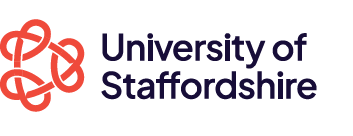Module Descriptors

GLOBAL VOICES: STORIES OF EMPIRE
ENGL50430
Key Facts
Digital, Technology, Innovation and Business
Level 5
30 credits
Contact
Leader: Melanie Ebdon
Email: M.D.Ebdon@staffs.ac.uk
Hours of Study
Scheduled Learning and Teaching Activities: 72
Independent Study Hours: 228
Total Learning Hours: 300
Assessment
- MID MODULE ESSAY weighted at 20%
- ANNOTATED BIBLIOGRAPHY weighted at 20%
- END OF MODULE ESSAY weighted at 60%
Module Details
ASSESSMENT DETAILS
A mid-module essay length 1,500 weighted at 20%.[Learning Outcomes 1, 2, 3, 4]
An annotated bibliography of online sources (1,000 words, 20%) [Learning outcomes 1, 3]
An end of year essay length 2,500 words weighted at 60%. [Learning Outcomes 1, 2, 3, 4]
Key Information Set:
100% coursework
An annotated bibliography of online sources (1,000 words, 20%) [Learning outcomes 1, 3]
An end of year essay length 2,500 words weighted at 60%. [Learning Outcomes 1, 2, 3, 4]
Key Information Set:
100% coursework
INDICATIVE CONTENT
This module deals with postcolonial literature and theory. The legacy of imperialism in (ex-)colonised cultures is fundamental to our study, but the main focus here is the role that literature and culture can play in resisting that legacy and helping in the construction of new, 'postcolonial' identities. We will focus upon a variety of (ex-)colonial contexts and literatures in order to examine both this issue and also, in turn, the problems posed to these 'national identities' by factors such as class, gender and migrancy. Primary texts may include works such as:
The God of Small Things – Arundhati Roy
In a Free State – V.S.Naipaul
Things Fall Apart – Chinua Achebe
Gardening in the Tropics – Olive Senior
The God of Small Things – Arundhati Roy
In a Free State – V.S.Naipaul
Things Fall Apart – Chinua Achebe
Gardening in the Tropics – Olive Senior
LEARNING STRATEGIES
Contact teaching will be through workshop format. Students will be expected to work both independently (on research and preparation for both classes and assessments) and as part of a team (on some class exercises and presentation work).
Key Information Set:
10% scheduled learning and teaching activities
90% guided independent learning
Key Information Set:
10% scheduled learning and teaching activities
90% guided independent learning
RESOURCES
PC Projector
Video
Library
Internet
The Blackboard virtual learning environment will be available (where relevant) to support this module. Details will be supplied in the module handbook.
Video
Library
Internet
The Blackboard virtual learning environment will be available (where relevant) to support this module. Details will be supplied in the module handbook.
TEXTS
Secondary critical and theoretical works will be selected from a 'reader' such as:
Ashcroft et al (eds) (2006) The Post-Colonial Studies Reader. 2nd edition. London: Routledge.
Ashcroft et al (eds) (2006) The Post-Colonial Studies Reader. 2nd edition. London: Routledge.
LEARNING OUTCOMES
1. DEMONSTRATE A NUANCED UNDERSTANDING OF SOME OF THE KEY ISSUES AND DEBATES AROUND POSTCOLONIAL LITERATURE, INCLUDING HISTORICAL CONTEXT.
[Knowledge and Understanding]
2. DEMONSTRATE SKILLS OF ANALYSIS OF CONTEMPORARY TEXTS AND THE ABILITY TO CONSTRUCT A COHERENT ARGUMENT.
[Analysis]
[Contemporary Analysis]
3. APPLY A WIDE RANGE OF SECONDARY SOURCE MATERIAL INCLUDING MORE COMPLEX THEORETICAL TEXTS.
[Application]
4. COMMUNICATE AN ARGUMENT CLEARLY, PRECISELY AND ACCURATELY IN WRITING.
[Communication]
[Reflection]
[Knowledge and Understanding]
2. DEMONSTRATE SKILLS OF ANALYSIS OF CONTEMPORARY TEXTS AND THE ABILITY TO CONSTRUCT A COHERENT ARGUMENT.
[Analysis]
[Contemporary Analysis]
3. APPLY A WIDE RANGE OF SECONDARY SOURCE MATERIAL INCLUDING MORE COMPLEX THEORETICAL TEXTS.
[Application]
4. COMMUNICATE AN ARGUMENT CLEARLY, PRECISELY AND ACCURATELY IN WRITING.
[Communication]
[Reflection]